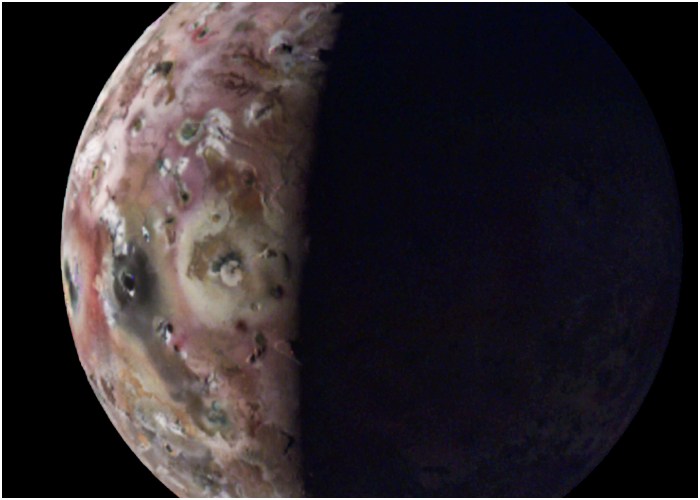NASA’s Juno spacecraft has provided a groundbreaking glimpse of Io, Jupiter’s most volcanic moon, revealing an enormous, glass-like lava lake. The recent flybys, the closest ever to Io, have captured spectacular images and data, offering unprecedented insight into its fiery surface. This article delves into the remarkable findings from this mission and explores their implications for our understanding of Io, volcanic activity on other celestial bodies, and the broader dynamics of the solar system. During its December 2023 and January 2024 orbits, Juno ventured within 930 miles of Io, allowing it to capture detailed images of Loki Patera, a massive 127-mile-long lava lake. The center of Loki Patera contains cooling lava, surrounded by potentially molten magma, presenting a unique geological spectacle. The clarity and smoothness of this lava lake have been compared to obsidian glass found on Earth, indicating an incredibly smooth, reflective surface that enhances our understanding of volcanic processes on Io.
Technological Triumphs
The success of Juno’s mission to Io highlights significant advancements in space exploration technology. The spacecraft’s instruments have recorded specular reflections from the lava lake, suggesting parts of Io’s surface are incredibly smooth, akin to glass. This level of detail in the data collected is unprecedented and provides critical insights into the volcanic and geological processes on Io. Scott Bolton, the principal investigator for the Juno mission, emphasized the importance of these findings during a news conference at the European Geophysical Union General Assembly in Vienna. The data not only enhances our geological maps of Io but also helps refine our models of volcanic activity across the solar system.
Impacting the Comic Book Landscape
With its strategic release date set just before the “Alien: Romulus” film premiere, “Aliens vs. Avengers” is positioned to be a major event in Marvel’s summer calendar. The series is anticipated to weave significant plot developments and character dynamics that could potentially alter the future narrative arcs of both the Marvel and Alien franchises. This crossover aims to attract not only dedicated fans of both series but also to captivate new readers with its innovative approach to merging these two legendary worlds. Marvel has hinted at unexpected twists and intense showdowns, suggesting that this series will not only uphold the legacy of the involved franchises but also push them in new, exciting directions.

Broader Implications and Future Missions
Juno’s observations of Io provide more than just a snapshot of volcanic activity; they offer a window into the dynamic processes that shape our solar system’s formation and evolution. These insights are vital for planning future missions to other moons and planets with volcanic activity. Furthermore, understanding Io’s volcanic nature helps scientists predict volcanic behaviors on similar celestial bodies, potentially identifying habitable environments in outer space.
Extended Scientific Value
The Juno mission’s extended duration has enabled continuous monitoring of Io’s volcanic activity, allowing scientists to observe changes over time and better understand the moon’s geological history. This long-term data collection is crucial for piecing together the past environmental conditions that shaped Io and for forecasting future volcanic events. Additionally, these findings could inform the development of technologies and methodologies for studying extreme environments in more accessible parts of our solar system and beyond.